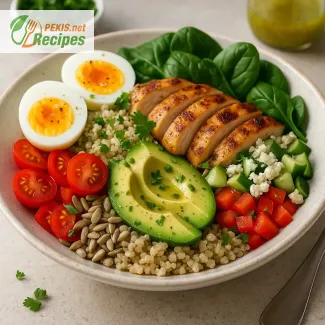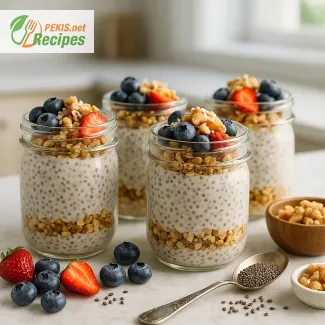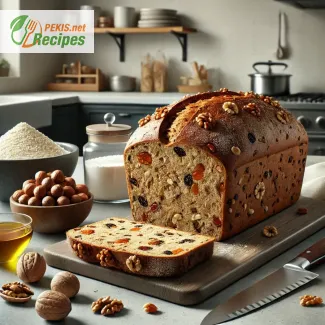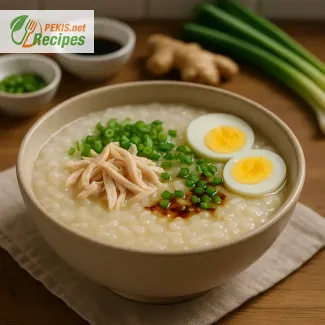
Energizing Morning Fuel with Protein-Rich Breakfast Bowls
A flavorful and nutrient-packed way to kickstart your day with strength and satisfaction
Waking up to a high-protein breakfast bowl is one of the most effective ways to set the tone for a vibrant, productive day. These hearty and colorful creations are far more than just a trend – they’re a balanced fusion of flavor, nutrition, and sustained energy that caters to modern lifestyles. Whether you’re powering through a workout, tackling a demanding schedule, or simply seeking a delicious way to nourish your body, a well-composed breakfast bowl brings together ingredients that fuel your body and mind without compromising on taste or convenience.
The beauty of a protein-rich breakfast bowl lies in its versatility. It can be built around lean proteins, healthy fats, and fiber-rich vegetables, layered with ingredients that provide both satiety and delight in every bite. Unlike sugary cereals or carb-heavy pastries, a breakfast bowl focused on protein delivers a slower energy release, keeping you full and energized for hours. Think of perfectly scrambled eggs nestled beside creamy avocado, tender grilled chicken or tofu, crunchy seeds, roasted sweet potatoes, sautéed greens, and a drizzle of homemade tahini dressing – all in one vibrant bowl.
Why protein in the morning matters
Protein plays a crucial role in maintaining muscle mass, regulating blood sugar levels, and keeping hunger hormones at bay. Consuming it first thing in the morning can reduce cravings, enhance cognitive focus, and support metabolic function. A breakfast bowl rich in protein not only satisfies your taste buds but also provides your body with the building blocks it needs to repair and grow. For individuals following fitness goals, weight management programs, or simply looking for long-lasting energy, high-protein breakfast bowls are an ideal choice.
Ingredients that bring power and pleasure
At the core of any successful breakfast bowl is balance – combining ingredients that serve both nutritional value and flavor harmony. Popular protein sources such as eggs, Greek yogurt, cottage cheese, smoked salmon, or plant-based tofu can be complemented with slow-digesting carbohydrates like quinoa, oats, or roasted vegetables. Adding healthy fats from nuts, seeds, or avocado helps support brain function and adds creamy richness, while a variety of fresh herbs, spices, and even fermented foods can elevate the profile of your bowl to gourmet status.
Texture, temperature, and color make all the difference
What sets a breakfast bowl apart from a simple plate of food is its sensory appeal. A great bowl combines contrasting textures – soft scrambled eggs, crispy roasted chickpeas, juicy cherry tomatoes, or crunchy red cabbage slaw – to keep every bite exciting. Incorporating warm and cool elements, such as warm quinoa with chilled cucumber slices or roasted sweet potato with cool hummus, adds a dimension of complexity that makes breakfast feel indulgent yet wholesome. A vibrant color palette doesn’t just look beautiful – it also ensures a broad spectrum of nutrients from phytonutrient-rich vegetables and fruits.
Designed for every lifestyle
One of the reasons breakfast bowls are surging in popularity is their adaptability to any dietary preference or lifestyle. Whether you follow a gluten-free, vegetarian, low-carb, or dairy-free regimen, a protein-packed breakfast bowl can be easily tailored to meet your needs. They can also be prepared ahead of time, making them perfect for busy mornings or meal-prep routines. From a post-yoga protein boost to a midweek office breakfast, these bowls are designed to move with you, giving you freedom without sacrificing nutrition or taste.
Elevate your morning routine with intention
A thoughtfully prepared breakfast bowl is more than just food – it’s a morning ritual, an act of self-care, and a way to ground yourself before the day unfolds. Choosing to begin your morning with a bowl of wholesome ingredients is a declaration that your health, energy, and enjoyment matter. With the right combination of proteins, vegetables, and flavorful additions, every bite becomes a celebration of nourishment and culinary creativity.
From savory to sweet, from Mediterranean-inspired to Asian fusion, the high-protein breakfast bowl invites exploration, variety, and personalization. It's a template for wellness that adapts to your tastes and fuels your goals. The next time you reach for breakfast, choose the bowl that gives back – to your body, your mood, and your day ahead.
- Cook the quinoa according to package instructions or simmer in double the amount of water until soft, then fluff with a fork. Let cool slightly.
- Grill the chicken breast on a hot grill or pan with a small amount of olive oil, season with salt, pepper, and smoked paprika. Cook for 5–6 minutes per side, until golden and fully cooked through. Let rest, then slice.
- Boil the eggs for 8–9 minutes until hard-boiled, then cool under cold water, peel, and cut into halves.
- Prepare the vegetables: wash and slice cherry tomatoes, cucumber, red bell pepper, and avocado. Wash and dry the baby spinach.
- Prepare the dressing: in a small bowl, whisk together the olive oil, lemon juice, remaining salt, pepper, and chopped parsley.
- Assemble the bowls:
- Place 100 g (½ cup) of cooked quinoa in the bottom of each bowl.
- Top with 100 g grilled chicken slices, 2 egg halves, and a quarter of the avocado slices.
- Add a handful of baby spinach, cherry tomatoes, diced red bell pepper, and cucumber slices.
- Sprinkle with 25 g (almost 1 oz) of crumbled feta and 7.5 g (½ tbsp) sunflower seeds.
- Drizzle with the herb-lemon dressing.
Creative Upgrades for a Better Breakfast Bowl Experience
Simple ingredient tweaks that take your high-protein bowl to the next level
When it comes to high-protein breakfast bowls, even a small change in ingredients or preparation can have a significant impact on flavor, texture, and nutritional profile. While the base recipe provides a solid foundation for a nutritious and satisfying meal, there’s always room for innovation that aligns with your taste preferences, dietary goals, or even seasonal availability. Improving a traditional breakfast bowl doesn’t mean reinventing it—it means refining and enhancing it with thoughtful substitutions, flavor boosters, and smart techniques that make the experience more enjoyable and personalized.
Elevating taste through thoughtful ingredients
One of the most effective ways to upgrade your bowl is by experimenting with umami-rich additions. Consider replacing standard grilled chicken with smoked salmon, lean turkey sausage, or grilled halloumi for a more pronounced flavor profile. These ingredients not only enhance taste but also maintain or increase the protein content.
You can also add roasted chickpeas, seasoned with cumin or paprika, to introduce crunch and spice, or pickled red onions for a zesty tang that contrasts beautifully with creamy elements like avocado or feta.
For a plant-based twist, swapping eggs with silken tofu scramble or tempeh slices adds depth while keeping the protein intake high. This not only caters to a wider range of diets but also introduces a more diverse amino acid profile.
Texture contrast for better mouthfeel
The best breakfast bowls engage the senses beyond taste. Adding elements with contrasting textures can significantly enhance the eating experience. If your current version feels too soft, incorporate toasted seeds, crushed nuts, or baked pita chips for added crunch. A spoonful of creamy hummus, tahini, or even a dollop of Greek yogurt can lend smoothness and richness, balancing crisp ingredients like cucumbers or raw bell peppers.
Another technique is to roast some of your vegetables—roasted red peppers or caramelized onions can infuse your bowl with sweetness and depth that raw vegetables might lack.
Seasonal swaps that keep things fresh
Keeping your breakfast bowl aligned with seasonal produce not only improves flavor but also ensures you're getting peak nutrition. In the summer, switch spinach for arugula or watercress for a peppery bite. In the fall, swap cherry tomatoes for roasted squash cubes or beets, which offer earthy sweetness and a pop of color.
Using seasonal herbs like basil in summer or rosemary in colder months can introduce aromatic layers that elevate the entire bowl.
Healthier and cleaner alternatives
To make the bowl even more health-conscious, focus on reducing saturated fats and sodium. Replace feta cheese with a low-sodium cottage cheese, or skip added cheese altogether and opt for nutritional yeast, which provides a cheesy flavor without the fat.
If you’re watching cholesterol, replacing half or all the eggs with egg whites can help maintain protein intake while minimizing fat and cholesterol. For those reducing carbohydrate intake, substituting quinoa with cauliflower rice lowers the calorie count and increases vegetable servings.
Consider replacing traditional dressings with avocado-based sauces or citrus vinaigrettes, which reduce added oils and sugars while enhancing freshness.
Common mistakes to avoid
Even the best recipes can be compromised by a few missteps. A common issue is overloading the bowl, which makes the flavors muddled and the portion unbalanced. It’s better to focus on a handful of complementary ingredients rather than adding too many elements.
Another pitfall is undercooked or overseasoned proteins. Dry chicken or overly salty eggs can disrupt the harmony of the bowl. Always rest your grilled meats, season thoughtfully, and ensure even cooking.
Skipping the acid—like lemon juice or vinegar—can also result in a flat-tasting bowl. A splash of acid brightens the overall dish and balances heavier components like eggs and avocado.
Why homemade beats pre-packaged
Preparing your breakfast bowl at home gives you complete control over ingredients, freshness, and portion size. Unlike store-bought versions, which often contain preservatives, excess sodium, and refined oils, a homemade bowl can be tailored exactly to your preferences and health goals.
Making it at home also allows you to integrate leftovers, reduce food waste, and get creative with whatever’s available in your pantry. The process itself can be enjoyable and grounding, becoming a mindful morning ritual rather than just a meal.
Flavor enhancers and finishing touches
Adding finishing elements can elevate your bowl from simple to sensational. A light drizzle of balsamic glaze, a sprinkle of za’atar, or a spoonful of chimichurri can introduce vibrant new notes. These touches don’t just add taste—they show attention to detail that transforms a basic recipe into something truly special.
If you enjoy spice, a dash of sriracha, harissa, or crushed chili flakes can awaken your palate and improve digestion. For sweetness, especially in hybrid savory-sweet bowls, try roasted grapes, fig slices, or a hint of maple syrup with goat cheese.
Customization for every lifestyle
Whether you're gluten-free, dairy-free, vegetarian, or following a macro-based plan, the breakfast bowl format supports a wide range of diets. Using certified gluten-free quinoa, dairy-free cheese, and plant-based proteins allows you to maintain dietary requirements without sacrificing satisfaction.
Creating a rotating base of ingredients—different grains, proteins, and toppings—ensures you never get bored, while still hitting your nutritional needs.
A well-improved traditional breakfast bowl is not just a dish; it becomes a canvas for culinary creativity, an opportunity to listen to your body, and a way to nourish yourself intentionally every single morning.
Allergens present in the recipe:
- Eggs
- Milk (feta cheese)
- Seeds (sunflower)
Contains gluten: No (naturally gluten-free)
Suggestions to eliminate allergens and gluten:
- Replace eggs with pan-fried firm tofu slices.
- Use plant-based feta or omit cheese for a dairy-free version.
- Omit sunflower seeds or substitute with roasted pumpkin seeds if seed allergy is present.
- Vitamin A: 750 µg – supports vision and immune system
- Vitamin C: 60 mg – enhances iron absorption and immunity
- Vitamin K: 90 µg – important for blood clotting
- Vitamin E: 4 mg – protects cells from oxidative damage
- Folate: 110 µg – crucial for cell growth and metabolism
- Calcium: 180 mg – essential for bones and teeth
- Iron: 3.2 mg – supports oxygen transport in blood
- Magnesium: 95 mg – supports muscle and nerve function
- Potassium: 900 mg – regulates fluid balance and blood pressure
- Zinc: 2.5 mg – important for immunity and cell repair
- Lycopene (from tomatoes): 3.5 mg – supports heart health
- Beta-carotene (from spinach, red pepper): 4.8 mg – converts to vitamin A
- Lutein + Zeaxanthin: 2.2 mg – protect against eye degeneration
- Vitamin C (from peppers, lemon): 60 mg – boosts skin and immune health
- Vitamin E (from avocado, sunflower seeds): 4 mg – protects cells from free radicals





